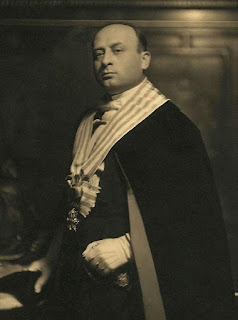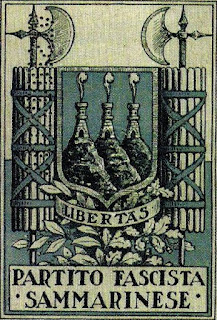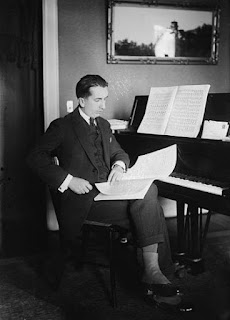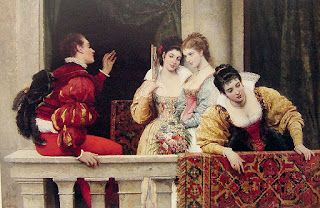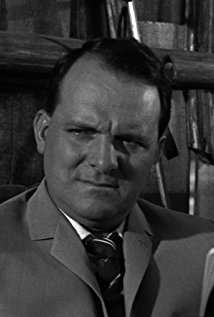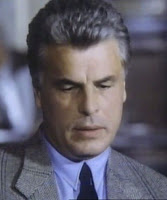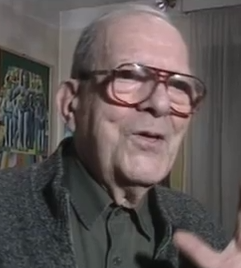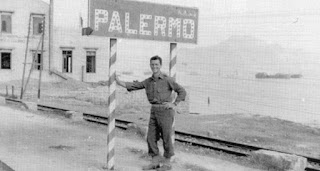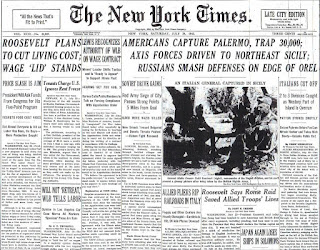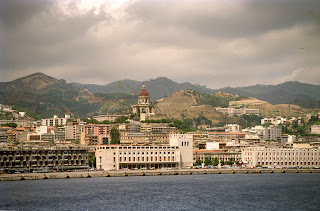Rome-born artist responsible for murals in US Capitol Building
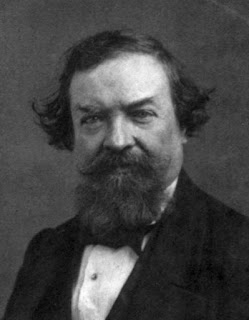 |
Constantino Brumidi left Italy in 1852 after
being released from prison |
Constantino Brumidi, an artist whose work provides the backcloth to the daily business of government in the United States Capitol Building in Washington, was born on this day in 1805 in Rome.
Brumidi’s major work is the allegorical fresco
The Apotheosis of Washington, painted in 1865, which covers the interior of the dome in the Rotunda.
Encircling the base of the dome, below the windows, is the
Frieze of American History, in which Brumidi painted scenes depicting significant events of American history, although the second half of the work, which he began in 1878, had to be completed by another painter, Filippo Costaggini, as Brumidi died in 1880.
Previously, between 1855 and about 1870, Brumidi had decorated the walls of eight important rooms in the Capitol Building, including the Hall of the House of Representatives, the Senate Library and the President’s Room.
His
Liberty and
Union paintings are mounted near the ceiling of the
White House entrance hall and the first-floor corridors of the Senate part of the Capitol Building are known as the
Brumidi Corridors.
Brumidi arrived in the United States in 1852, having spent 13 months in jail in Rome following the upheaval caused by the occupation of the city by French forces and the revolution among Roman citizens that led to the formation of the short-lived
Roman Republic.
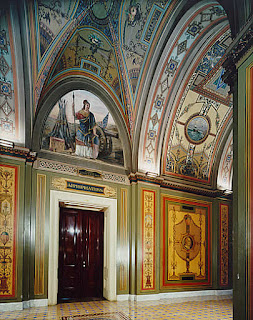 |
A section of Brumidi's Corridor in the
Capitol Building in Washington |
He was already a well-known and respected artist, whose murals adorned a theatre built at the villa of the wealthy Torlonia family. At the time of the revolution he was working for the Vatican, where he has restored some frescoes for Pope Gregory XVI and painted a portrait of Pope Pius IX, for whom he was also a captain in the civic guard set up to defend the city. At the same time, he and his family were running a coffee shop in Rome inherited from his father.
When Pius IX fled to avoid capture when the republic was declared, Brumidi took it upon himself to remove some valuable art works from the Vatican for safe keeping. When Pius IX returned, however, Brumidi was arrested, accused of theft and sentenced to 18 years in prison.
It was only after many pleas were made on his behalf that the pope decided to show mercy on Brumidi and grant him a pardon, his decision influenced by Brumidi’s intention to emigrate to the United States.
Born in Rome of a Greek father and Italian mother, and trained in painting and sculpture at the Accademia di San Luca, he applied for US citizenship as soon as he arrived in New York and began to earn a living from private commissions and and by painting murals and altarpieces in various churches.
Among his religious paintings are a fresco of the
Crucifixion at
Our Lady of the Scapular and St. Stephen Church on East 29th Street in Manhattan, for which he also executed a
Martyrdom of St. Stephen and an
Assumption of Mary.
 |
Brumidi worked at the Capitol Building for
25 years until his death |
He also executed frescoes at Taylor's Chapel, Baltimore and further examples of his work can be seen at n the Cathedral-Basilica of Saints Peter and Paul in Philadelphia, St. Ignatius Church in Baltimore, and St Aloysius Church in Washington.
When he was granted US citizenship in 1857 he was already in the employ of the US Government, earning eight dollars a day. He was so proud of his new status that a fresco he completed soon afterwards, in the Hall of the House of Representatives, he signed ‘C. Brumidi, Artist, Citizen of the U.S.’
Brumidi died in Washington and was interred at Glenwood Cemetery. His grave was unmarked and its location lost until 1952, when a document detailing where he had been buried was found and a marker was finally placed above it.
His work in the Capitol was not acknowledged for many years but in September, 2008, President George W. Bush signed a law that posthumously awarded him the
Congressional Gold Medal, to be displayed in the Capitol Visitor Center, as part of an exhibit honoring him.
 |
| The Accademia di San Luca in Palazzo Carpegna |
Travel tip:
The
Accademia di San Luca was founded in 1577 as an association of artists in Rome with the purpose of elevating the work of "artists", which included painters, sculptors and architects, above that of mere craftsmen. The Academy was named after Saint Luke the evangelist who, legend has it, made a portrait of the Virgin Mary, and thus became the patron saint of painters' guilds. From the late 16th century until it moved to its present location at the Palazzo Carpegna - just behind the Trevi Fountain along Via della Stamperia - the Academy was based in a building by the Roman Forum near the Academy church of Santi Luca e Martina, designed by the Baroque architect, Pietro da Cortona.
 |
| A view over St Peter's Square at the heart of the Vatican |
Travel tip:
The
Vatican can be defined as the palace within the Vatican City in which the pope resides or Vatican City itself, an independent state inside Italy, policed by its own security force, the Swiss Guard. St Peter’s Basilica, built over the place where St Peter is believed to have been crucified and buried, is part of Vatican City, as are the Vatican museums where you can see the Sistine Chapel, which was decorated by Michelangelo. The Pope holds audiences in the Vatican every Wednesday and blesses the crowds in St Peter’s Square every Sunday.
More reading:
How Michelangelo's ceiling of the Sistine Chapel was revealed for the first time
The Sienese sculptor who made his mark in Pittsburgh and Birmingham, Alabama
The Tuscan architect whose work found him fame in Detroit
Also on this day:
1471: The death of the flamboyant Pope Paul II
1928: The birth of former President of Italy Francesco Cossiga
Home
